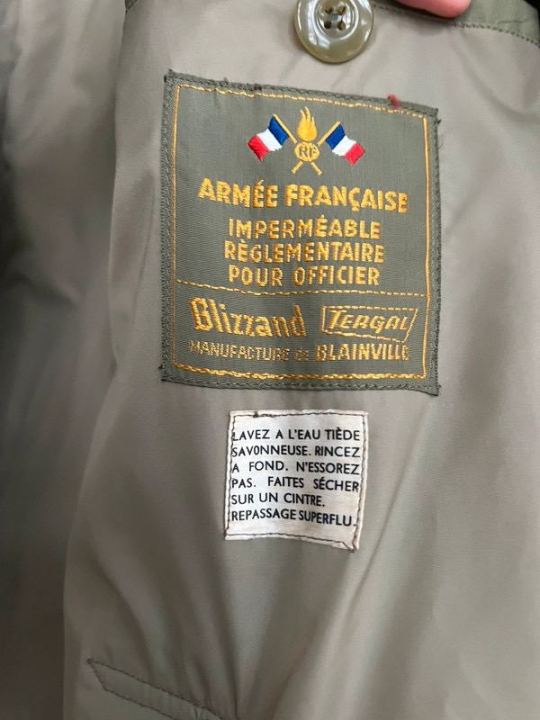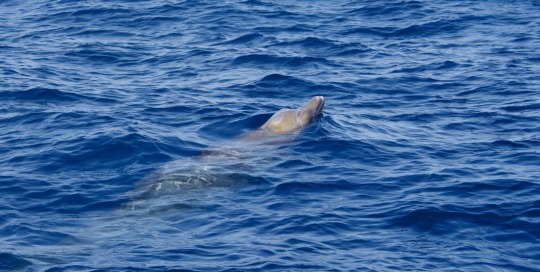#blainville
Explore tagged Tumblr posts
Text

14 notes
·
View notes
Text
youtube
#history#royal history#lindsay holiday#philippe I duke of orleans#queer#queer history#philippe de lorraine#henriette anna of england#louis xiv#armand de gramont#elizabeth charlotte of the palatinate#anne lennard#armand charles de la porte de la meilleraye#charles II#aphra behn#her history#henry of prussia#blainville#count la roche laymon#christian ludwig von kaphengst#frederick II#isabella of bourbon-parma#joseph II#maria christina of teschen#ludwig viktor of austria#luisa isabel alvarez de toledo#leoncio gonzalez de gregorio#liliana maria dahlmann#ivar mountbatten#mavendra singh gohil
2 notes
·
View notes
Text

🎚The best DJ's🎙are making you dance!🎉
🎚KJ & Mr. Mig - 🎶Tragedy
KJ is an electrifying newcomer to the EDM scene, but she’s no stranger to the world of music. Classically trained under the legendary Judith Fredericks of the Metropolitan Opera, KJ has honed a mastery across multiple genres. Her dynamic background brings a unique depth to her sound, blending powerful, emotive storytelling with a vibrant, beat-driven energy that captivates audiences. With each track, KJ creates an immersive journey, whether she’s drawing on her classical roots or pushing boundaries in electronic music. Get ready to experience a bold new voice in EDM—KJ is here to make waves. “ Tragedy” is a captivating melodic dance EDM track. KJ’s hauntingly beautiful vocals and emotional lyrics cut through the beat with raw, undeniable intensity. Her voice brings a deep, vulnerable energy to each line, while Mr. Mig’s spine-chilling production layers atmospheric synths, pulsing basslines, and dramatic buildups that sweep listeners into a cinematic journey. The track fuses heartfelt lyrics with an infectious, danceable rhythm, creating a unique contrast that’s both haunting and euphoric. It’s a song that invites you to lose yourself in the beauty of heartbreak on the dance floor. This track is the first crossover genre for KJ.
#dance#dancemusic#dancemusic2024#DanceMusicVibes#dancemusiclovers#dancemusicculture#dancemusicoficial#dancemusıc#house#housemusic#housemusicdj#housemusicvibes#housemusic4life#housemusiclovers#housemusicforever#housemusicalllifelong#housemusicallnightlong#hitradio#hits#hitsong#HitSingle#blainville#manitoba#manitobamusic#ManitobaCanada#manitobaopportunities
0 notes
Text

Ça me touche beaucoup de recevoir ce prix du CALQ La reconnaissance de nos pairs est primordiale pour une artiste ! C’est un encouragement à persévérer dans notre domaine. Pour moi c’est un art de recherches en arts visuels. Je suis spécialisée dans les arts d’impression. Merci la vie ! ❤️
#conseil des arts et des lettres du Québec#laurentides#printmaking#xylomag#print#marilysegoulet#CALQ#artquebecois#artvisual#artcontemporary#Saint-Jérôme#sainthippolyte#Sainte-Thérèse#Val David#Mont-Laurier#Blainville#atelierdelile#artquebec#artcontemporain#artprint#art visuel#original art#artiste de l’année#culture Laurentides#merciatous
0 notes
Text
new exh: Can't Help Falling in Love by Tommee Profitt
15 notes
·
View notes
Text

Blainville's beaked whale Mesoplodon densirostris
Observed by sandrita_bio, CC BY-NC
#Mesoplodon densirostris#Blainville's beaked whale#Cetacea#Ziphiidae#cetacean#whale#Macaronesia#Spain#Canary Islands#Atlantic Ocean
18 notes
·
View notes
Text
Orthophoniste Blainville : Donner une voix à la communication, un mot à la fois
Au cœur des Laurentides, Blainville ne se limite pas à son charme de banlieue familiale. Cette ville abrite une communauté florissante d’orthophonistes qui transforment la vie des enfants, des adultes et des aînés. Les orthophonistes à Blainville aident les résidents à (re)trouver leur voix — parfois littéralement — que ce soit pour accompagner un enfant présentant un retard de langage ou un adulte après un AVC.
Que fait exactement un orthophoniste ?

Avant d’aller plus loin, clarifions le rôle de ces professionnels. En anglais, on les appelle « speech-language pathologists » (SLP). Leur mission principale est d’évaluer, diagnostiquer et traiter les troubles liés à la parole, au langage, à la communication et à la déglutition. Leur champ d’action est vaste : du simple zozotement au bégaiement, jusqu’aux troubles neurologiques complexes.
Un orthophoniste traite des clients de tous âges : il peut aider un tout-petit à prononcer ses premiers mots, accompagner un enfant ayant des difficultés de lecture, ou encore soutenir un aîné dont la parole a été affectée par la maladie de Parkinson ou un traumatisme crânien.
Pourquoi choisir un orthophoniste à Blainville ?
Blainville se distingue autant par son environnement de qualité que par son engagement envers la santé et l’éducation. Le réseau Orthophoniste Blainville est composé à la fois de services publics (par l’intermédiaire du CLSC) et de cliniques privées offrant un accès plus rapide et des soins spécialisés.
Les raisons qui poussent les familles à consulter un orthophoniste à Blainville incluent :
Retards de langage : si un enfant ne parle pas comme il le devrait pour son âge, une évaluation s’impose.
Problèmes d’articulation : certains sons mal prononcés peuvent nuire à la communication.
Difficultés d’apprentissage : les troubles de lecture et d’écriture peuvent découler de problèmes de traitement du langage.
Bégaiement ou troubles de la fluidité : cela peut affecter l’estime de soi et les interactions sociales.
Rééducation après maladie ou blessure : AVC, traumatisme cérébral ou maladies neurodégénératives peuvent altérer la communication.
Un accès rapide à un orthophoniste local permet souvent d’intervenir plus tôt, ce qui améliore considérablement les chances de réussite de la thérapie.
Quels services orthophoniques sont offerts à Blainville ?
Les orthophonistes à Blainville commencent généralement par une évaluation complète, incluant tests standardisés, observations et entretiens avec les proches. À la suite de cette analyse, un plan de traitement personnalisé est mis en place.
Les services typiques incluent :

Thérapie d’articulation
Développement du langage
Entraînement aux habiletés de communication sociale
Soutien à la littératie (lecture et écriture)
Thérapie de la fluidité (bégaiement)
Thérapie vocale et de résonance
Évaluations de la déglutition chez les adultes
Les séances peuvent être hebdomadaires en clinique, par télésanté ou sous forme d’accompagnement parental à domicile.
L’intervention précoce : un facteur déterminant
L’un des principes fondamentaux de l’orthophonie est que plus l’intervention est précoce, meilleurs sont les résultats. Le cerveau des jeunes enfants est particulièrement malléable, et agir tôt permet d’éviter des difficultés académiques et sociales plus tard.
De plus en plus de parents à Blainville prennent les devants lorsque leur enfant :
Utilise peu de mots comparativement à ses pairs
Comprend mal les consignes
Est difficile à comprendre après l’âge de trois ans
Exprime souvent de la frustration en tentant de communiquer
Travailler avec un orthophoniste, c’est ouvrir la voie à une meilleure expression de soi et à un apprentissage plus fluide.
Les adultes aussi ont besoin d’orthophonie
Si une grande partie de l’attention se porte sur les enfants, les adultes à Blainville bénéficient aussi des services d’orthophonie. Une thérapie peut être salvatrice pour les personnes atteintes d’aphasie après un AVC ou celles ayant des troubles cognitifs de la communication.
Perdre sa capacité à s’exprimer — partiellement ou complètement — affecte non seulement l’autonomie mais aussi la santé mentale. Le rôle des orthophonistes de Blainville est ici essentiel pour restaurer la dignité et le lien humain.
Les interventions possibles chez l’adulte incluent :
Reconstruction du vocabulaire
Amélioration de la clarté de la parole
Travail sur la mémoire et l’attention dans la conversation
Utilisation de moyens de communication alternatifs (ex. : appareils AAC)
Comment accéder aux services d’un orthophoniste à Blainville ?
Voici quelques options disponibles :
CLSC (système public) : Gratuit, mais les délais peuvent être longs.
Cliniques privées : Accès plus rapide, horaires flexibles (soir, fin de semaine), parfois bilingues.
Écoles : Les enfants ayant des besoins liés à l’apprentissage peuvent être suivis par les services du centre scolaire.
Les troubles de la communication ne sont pas un caprice, ce sont des enjeux de santé. Chercher de l’aide, c’est faire preuve de responsabilité, pas d’exagération.
La communication est au cœur des liens humains. Personne ne devrait vivre dans le silence ou l’incompréhension. Qu’il s’agisse d’un parent inquiet, d’un enseignant observateur ou d’un adulte vivant une perte de repères, l’orthophoniste à Blainville est là pour accompagner chaque étape, un mot, une phrase, une voix à la fois.
Et même si leur travail ne fait pas la une des journaux, leur impact se mesure dans les progrès quotidiens de leurs patients — des barrières tombent, une syllabe à la fois.
Souhaitez-vous aussi un titre SEO alternatif, une méta-description ou un visuel de blog pour accompagner cette publication."If you found this helpful, wait till you read what’s next!"Orthophoniste Rive Nord : Donner une voix à chaque âge de la vie
0 notes
Text
Information Needed About The Deceased to Begin Funeral Arrangements
Planning a funeral requires gathering essential details about the deceased to ensure a smooth process. Whether you are arranging a traditional burial or cremation, providing accurate information helps funeral service providers handle the necessary paperwork and preparations. If you’re working with Brossard funeral services, having the required details ready can make the process easier during a difficult time.
Basic Personal Information
To begin funeral arrangements, you’ll need to provide the deceased’s full legal name, date of birth and place of birth. Other key details include:
Social Insurance Number
Residential address
Marital status and spouse’s name (if applicable)
Parents names (including mother’s maiden name)
This information is crucial for legal documents such as the death certificate and burial permit.
Funeral and Burial Preferences
If the deceased had prearranged funeral plans, their wishes should be followed. Otherwise, decisions must be made regarding:
Type of service (burial, cremation or memorial)
Preferred cemetery or final resting place
Religious or cultural traditions to be observed
Type of casket or urn
Working with Brossard funeral services ensures that these preferences are handled with care and respect. Funeral professionals can also guide families through the selection process if no prior arrangements are made.
Additional Documentation
In addition to personal details and service preferences, families should prepare:
A copy of the deceased’s will (if available)
Insurance policies that may cover funeral costs
Military service records (for veterans’ benefits)
Having this information readily available helps avoid delays and ensures all necessary arrangements are made smoothly.
By gathering these details in advance, families can focus on honoring their loved ones rather than dealing with unnecessary stress. Funeral service providers are there to support you, making the process as seamless and respectful as possible.
Read a similar article about cremation services in St Laurent here at this page.
#affordable funeral options in quebec#funeral alternatives in blainville#how much does a cremation cost
0 notes
Text

Offrez une nouvelle jeunesse à vos planchers avec nos services professionnels de sablage de plancher à Blainville. Que ce soit pour éliminer les éraflures, restaurer l’éclat naturel du bois ou préparer une finition impeccable, nos experts utilisent des techniques modernes pour des résultats durables et esthétiques.
0 notes
Text
#163 Blainville-Boisbriand Armada 5 Rouyn-Noranda Huskies 7 - 09 11 2024
youtube
View On WordPress
0 notes
Text
Transformez votre domicile avec les services de nettoyage experts à Blainville
Découvrez le pouvoir transformateur des services de nettoyage experts à Blainville. Notre équipe dévouée se spécialise dans la revitalisation de votre espace de vie, le laissant impeccable et accueillant. De l'attention méticuleuse aux détails à l'utilisation de produits de qualité supérieure, nous veillons à ce que votre maison brille de fraîcheur et de propreté. Rehaussez votre environnement de vie dès aujourd'hui avec nos services de nettoyage fiables et découvrez la différence qu'une expertise peut apporter. Pour plus d'informations, visitez notre site web : https://elgarsducoin.com/nettoyage-apres-construction/
0 notes
Text

Houses for Sale Blainville
With Equipe Filteau—houses for sale in Blairville—Find Your Dream Home! Imagine waking up each day in the Blainville house of your dreams. Equipe Filteau is here to help bring that to pass! We have an amazing selection of homes for sale, and we're dedicated to finding the ideal fit for you. Our knowledgeable staff is aware of your demands and will go above and beyond to make sure the house-buying process runs smoothly. Explore our listings to find the Blainville home that best fits your needs, whether you're looking for a modern townhouse or a cosy family residence. Take the first step towards realising your ideal house with Equipe Filteau by getting started now! For more details, visit. https://equipefilteau.com/en/houses-for-sale-in-blainville/
#immobilier blainville#meilleure courtier immobilier blainville#real estate agent blainville#duplex blainville#houses for sale in blainville#maison à vendre blainville#agent immobilier blainville
0 notes
Text
Thermopompe Mascouche
Si vous êtes à la recherche d'une thermopompe à Mascouche, ne cherchez pas plus loin que Prestige Climatisation. Nous proposons une gamme de thermopompes de haute qualité pour répondre à vos besoins de chauffage et de climatisation. Nos experts qualifiés vous guideront pour choisir le système idéal, assurant ainsi un confort optimal dans votre maison.
#etrepreneurs cvac à saint jérôme#réparation cvc laval#Pompes à Chaleur à Saint Jérôme#Chauffage Blainville#Thermopompes Murales
0 notes
Text

#𝗗𝗲𝘀𝗷𝗮𝗿𝗱𝗶𝗻𝘀 𝗘𝗻𝘁𝗿𝗲𝗽𝗿𝗶𝘀𝗲𝘀 - Laval-Laurentides octroie un Fonds C d'une valeur de 𝟭𝟬 𝟬𝟬𝟬 $ à Immeuble Losier Inc. ! 💰 Le 20 juin dernier#mon collègue Felix-Antoine Bérubé et moi-même sommes allés à la rencontre des entrepreneurs derrière le groupe Immeuble Losier Inc#une famille composée de 3 entrepreneurs possédant maintenant 4 concessionnaires Mitsubishi ! 🚗 Les propriétaires#𝗥𝗲́𝗷𝗲𝗮𝗻#𝗦𝗶𝗺𝗼𝗻 et 𝗠𝗮𝘅𝗶𝗺𝗲 𝗟𝗼𝘀𝗶𝗲𝗿#ont toujours été de réels passionnée de course automobile alors qu'ils ont participé à plusieurs rallyes dans les dernières années en coura#c'est en 2003 que M. 𝗥𝗲́𝗷𝗲𝗮𝗻 𝗟𝗼𝘀𝗶𝗲𝗿#le père de la famille#décide d'ouvrir un premier concessionnaire situé à Blainville. En 2010#les deux fils de M. Losier se joignent à l'entreprise en tant que partenaires et c'est à ce moment que deux autres concessions voient le jo#soit une à 𝗧𝗲𝗿𝗿𝗲𝗯𝗼𝗻𝗻𝗲 et l'autre à 𝗦𝗮𝗶𝗻𝘁-𝗝𝗲́𝗿𝗼̂𝗺𝗲. Finalement#c'est en octobre dernier que la 4e concession Mitsubishi dévoile son nouvel emplacement à 𝗕𝗿𝗼𝘀𝘀𝗮𝗿𝗱.📍 Outre la vente de véhicules neufs#le groupe compte pour chaque concession#un département de véhicules d’occasions ainsi que les départements de services et pièces. Il y a également des équipes dédiées spécifiqueme#n'hésitez pas à consulter le site web de l'entreprise : Blainville Mitsubishi | Blainville Mitsubishi | Concessionnaire Mitsubishi à Blainv#près de Laval : https://bit.ly/3zo4Oqp BlainvilleMitsubishi desjardinsentreprises GroupeLosier
0 notes
Text






☀ Eoplatax
Eoplatax ("dawn Platax") is an extinct genus of prehistoric spadefish that lived during the Early Eocene. It contains a single species, E. papilio (=E. subvespertilio (de Blainville, 1818)), from the Ypresian-aged Monte Bolca site of Italy. As its name suggests are closely allied to the extant genus, Platax, more commonly known as "batfish."
112 notes
·
View notes
Text







Hey les ami .es! Ce week-end vous pourrez me retrouver à FCD à Blainville sur mer!
Voici un petit aperçu des créations que j'aurais sur mon stand et je réaliserais également des dessins à la commande sur place. N'hésitez pas à passer dire bonjour :)
If you like my creations please consider supporting me by:
☕️Tipping me on Ko-Fi: https://ko-fi.com/florigami 🛍Buying my merch: www.redbubble.com/fr/people/labetenwar 🦊Ordering me commissions: https://labetenwar.wixsite.com/commissions 🐯Supporting me on Patreon: www.patreon.com/labetenwar 🦄Following me on socials: https://linktr.ee/florigami
🌸Thank you!! 🐇
#anthro#artists on tumblr#illustration#furry#digital illustration#furry art#digital art#drawing#anthropomorphic#fox#my merch#corgis of tumblr#corgi#rabbit#bunny#rooster#crow#spotted hyena#hyena#goat#wolf#pride#pride flag#pride month#queer pride#trans pride#lgbt pride#lgbtqia
21 notes
·
View notes